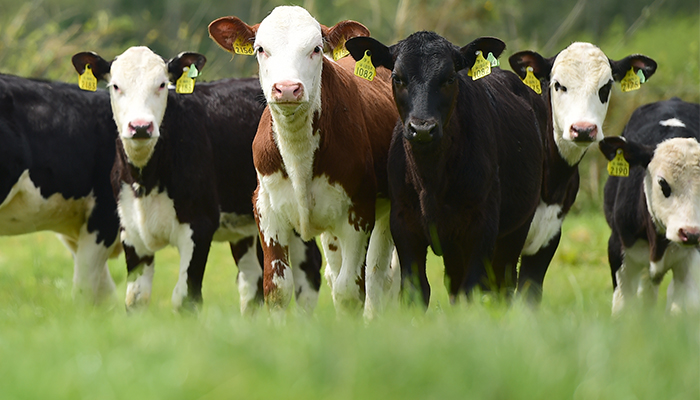26 July 2023
Mid-season parasite control for dairy-beef animals

Ensuring animals are free from parasites is an important factor to achieve the desired levels of performance on calf-to-beef farms, Tommy Cox, Teagasc DairyBeef 500 advisor, tells us more.
Parasite burdens can have a significant impact on animal performance and, with the majority of dairy-beef stock now outdoors for the last number of months, burdens have started to build. To prevent any reduction in performance, it is important to monitor and treat these where necessary.
Worms are a particular issue in dairy calf to beef systems. Given the age profile, the majority of animals have very little immunity to worms; stomach worms and lungworm are often the main offenders.
Stomach worms
Calves are particularly vulnerable to infection from stomach worms and this can result in ill-thrift and reduced growth rate. Cattle generally develop sufficient immunity to prevent clinical disease after the first grazing season. However, there have been numerous cases where older animals have had high worm burdens, therefore regular monitoring is required in older groups to ensure no issues arise.
Symptoms of stomach worms can include diarrhoea, decreased appetite and loss of weight. Stomach worms can cause severe damage to the stomach and small intestine, which will cause parasitic gastroenteritis. Monitoring is essential to prevent such issues from arising.
Regular dung sampling to assess faecal egg counts (FEC) is an excellent way of identifying a worm burden in a group. Where readings in excess 200 eggs per gram (epg) are recorded, treatment is advisable.
Control of stomach worms on dairy calf to beef farms is usually achieved by the administration of anthelmintic doses. There are currently three classes of anthelmintic licensed for the control of stomach worms in cattle – benzimidazole (white), levamisole (yellow) and macrocyclic lactone (clear). These products have been highly effective in controlling stomach worm infections in cattle previously. However, recent studies carried out by Teagasc have shown resistance to all three classes of product.
When implementing a dosing strategy, it is good practice to alternate between the different classes of drug to minimise the risk of a potential resistance build-up on your farm. Taking a dung sample a few weeks after treatment is good practice to ensure the product used gave an effective treatment.
Lungworm
In the case of lungworm, monitoring for clinical signs, such as a husky cough or difficult breathing, is the best way to identify if there is an issue. The recent rain after the prolonged dry spell will result in high levels of infestation and farmers need to be particularly vigilant.
Heavy infestations can lead to respiratory disease, so rapid treatment is advised. As regards treatment and control, most available anthelmintics are effective against larval and adult lungworms. Levamisole and white drenches will take out what parasites are there on the day of treatment. However, these will have no residual effect and, as a result, shorter treatment intervals will be required, whereas macrocyclic lactones – such as ivermectin – will give longer protection.
Best practice when dosing
When administering a drench to stock, particular attention needs to be payed to dose-to-weight calculations so animals receive a full dose. Farmers should dose based on the weight of the heaviest animal in the bunch. Where a large degree of weight variation exists, splitting the group into a heavier and lighter group and then dosing based on the heaviest in each group is advisable. When choosing a product, it is important to read the label and instructions carefully to ensure that you know exactly what the dose can and cannot treat. It is best to dose and return to dirty pasture post treatment, as this will help to reduce anthelmintic resistance.
In the below video, Tommy Cox tells us more on dosing strategies, while Gareth Peoples, DairyBeef 500 participant in Co. Donegal, outlines how he uses dung samples on his farm to make dosing decisions.
